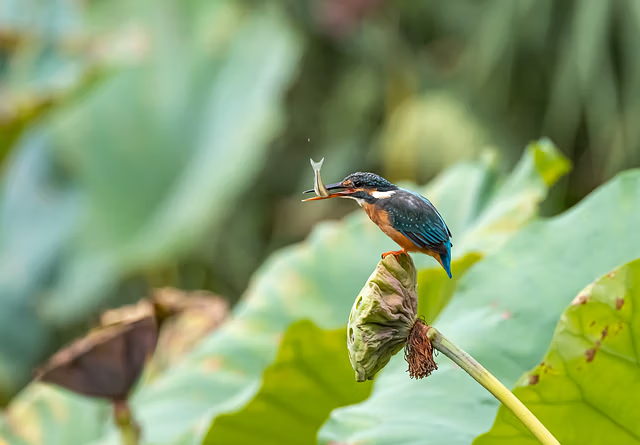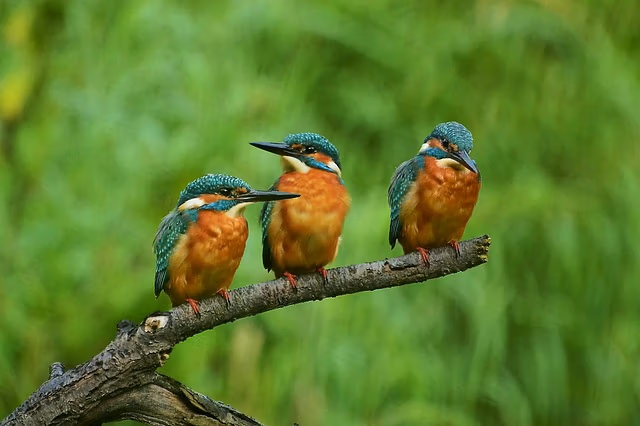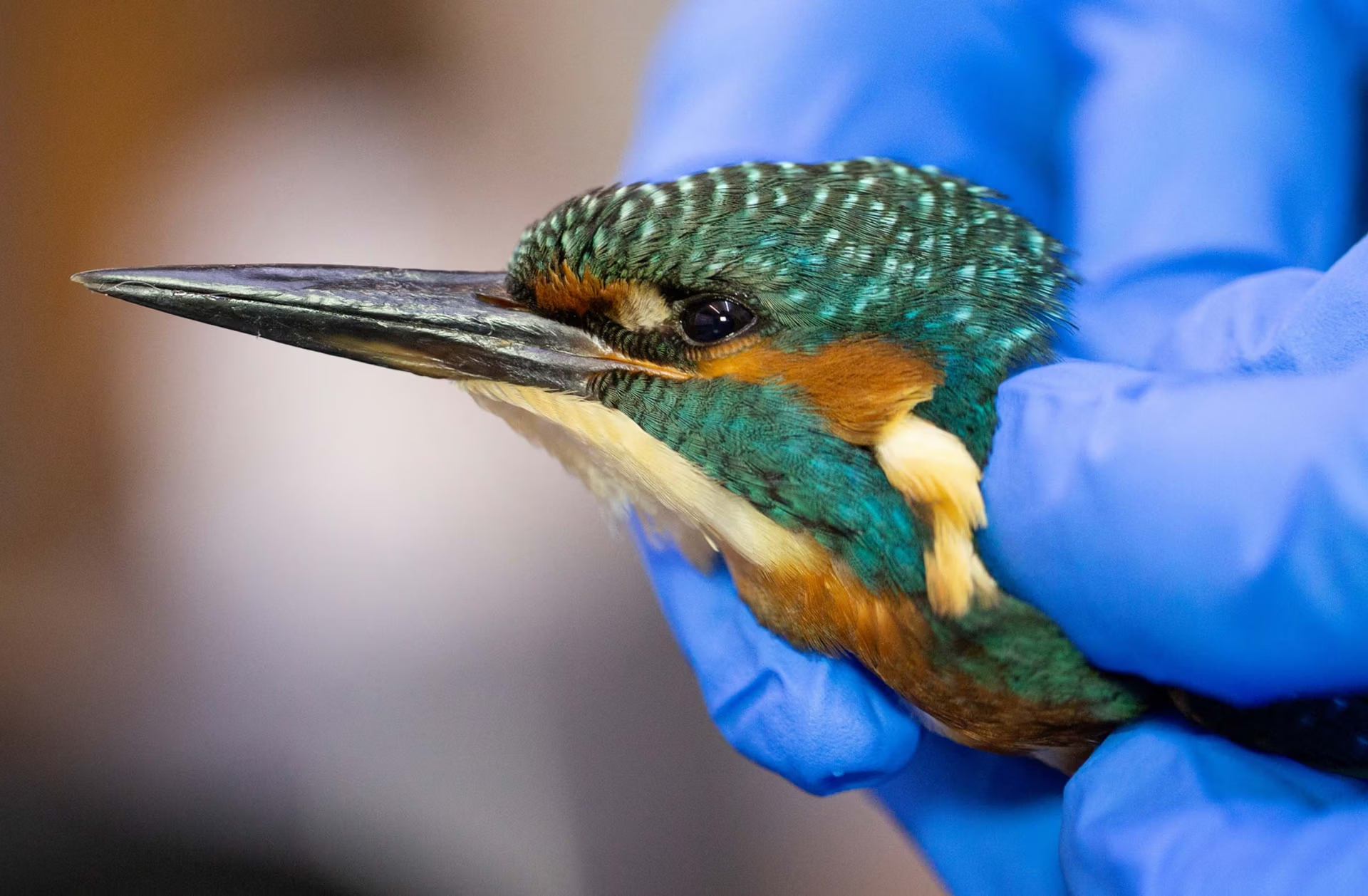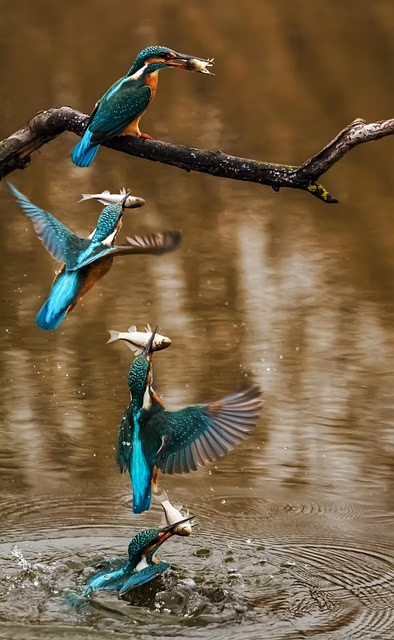Common Kingfisher
Alcedo atthis
Life History
Length: 15 -17 cm
Wingspan: 25cm
Weight: 40 g
Diet: Primarily eat fish, with a strong preference for small species like minnows and sticklebacks
Average lifespan: 2 years
When to see them: All year round
UK population: Between 3,800 and 7,000 breeding pairs
UK conservation status: Green

About
Known for its striking blue and orange plumage, compact body, and sharp, dagger-like bill, the common kingfisher can be found across Europe, North Africa, and much of Asia, typically inhabiting rivers, streams, and lakes with clear water and abundant fish. Despite its vivid colors, the kingfisher can be surprisingly elusive, often spotted as a flash of blue darting low over the water. It is an expert fisher, hovering briefly before diving with precision to catch small fish and aquatic insects.
Behaviour
Aside from its impressive hunting skills, the common kingfisher is also notable for its nesting behavior. It excavates burrows in riverbanks, creating long tunnels that end in a nesting chamber safely out of reach from predators. These birds are solitary and territorial, especially during breeding season when both the male and female work to feed their young. The presence of kingfishers is often an indicator of a healthy aquatic environment, making them both an ecological treasure and a visual delight for birdwatchers and nature enthusiasts alike.


Their Threats
The common kingfisher faces a range of threats, many of which are linked to human activity and environmental degradation. One of the primary dangers is the loss and pollution of its freshwater habitats. Agricultural runoff, industrial waste, and urban development can degrade water quality, reducing the availability of small fish and aquatic insects that kingfishers rely on for food. Riverbank destruction, whether from construction or flooding caused by climate change, also eliminates essential nesting sites. As a result, even small disruptions in habitat can have significant impacts on local kingfisher populations.
How you can help
- Protect and restore waterways: Support efforts to maintain clean, unpolluted rivers and streams by reducing chemical runoff, avoiding littering, and supporting habitat restoration projects.
- Preserve natural riverbanks: Avoid disturbing natural riverbank environments, especially during breeding season, and advocate against developments that would damage these key nesting sites.
- Promote sustainable fishing practices: Use wildlife-friendly fishing gear and dispose of fishing lines and hooks properly to prevent accidental harm to kingfishers and other aquatic wildlife.
- Support local conservation groups: Donate to or volunteer with organizations focused on bird and habitat conservation, especially those that monitor freshwater ecosystems.
- Raise awareness: Educate others about the importance of kingfishers and the threats they face, helping to build community support for conservation efforts.
